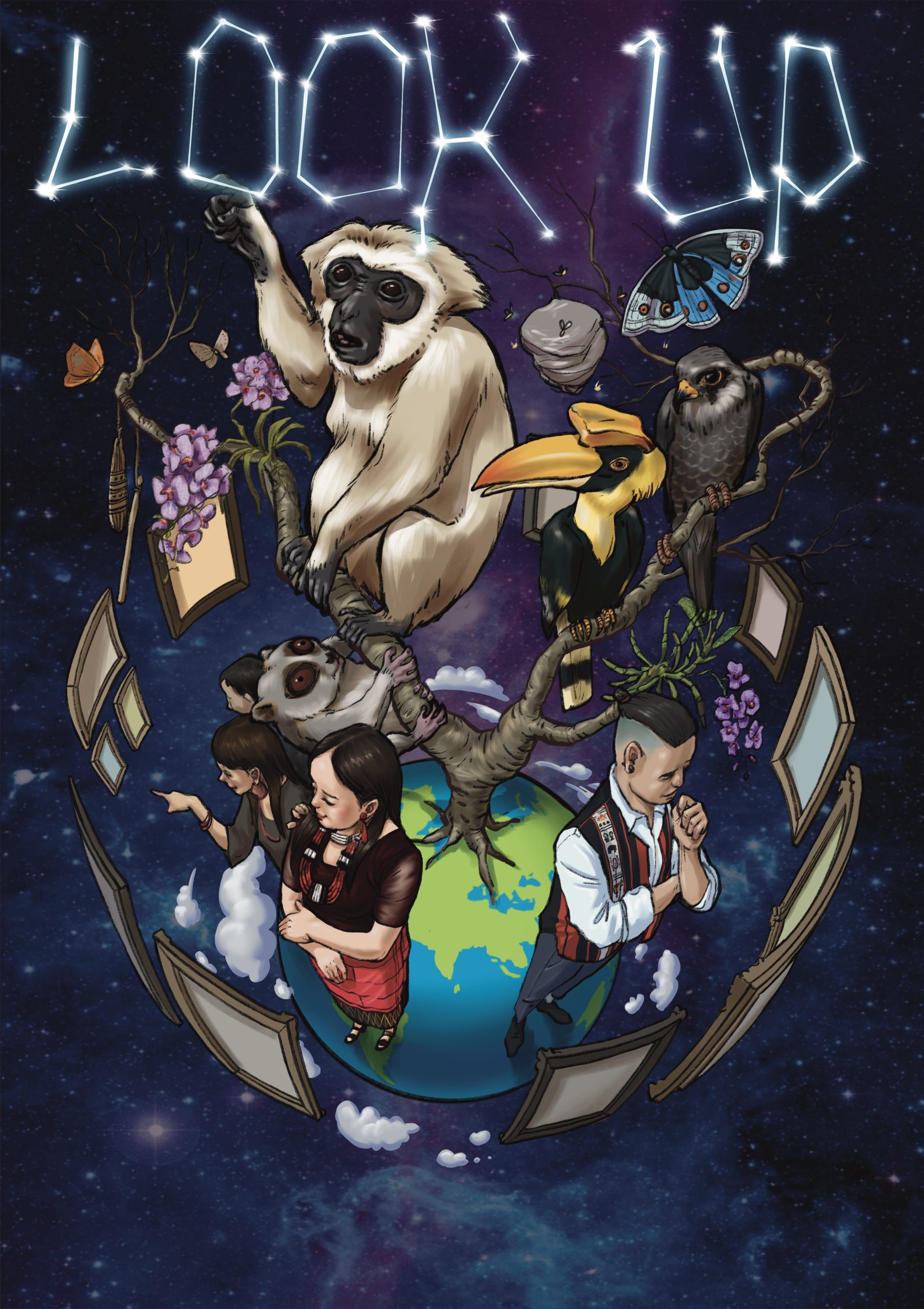The Highland Institute ran an exhibition and event series entitled Look Up! from September 21, 2024 till November 12, 2024.
These activities will brought together diverse types of knowledge about the world above our heads: the birds and butterflies, canopies and clouds, sky and stars, and so on. Local artist Santosh Yen designed the amazing poster above, bringing to life our core interests.
When we launched Look Up!, we were inspired by the work carried out in Australia and North America on cultural astrology. Much of this work has emphasised the shared nature of stargazing across cultures. How could we apply these findings to Northeast India?
We soon realized that many young Nagas, and other youth across Northeast India, did not know the names of constellations in their own languages. We wanted to find out more, and conducted a survey with the kind help of the students at Kohima College. Our findings showed that over 83% of respondents could not name a constellation in a local indigenous language. We also learned that most students wanted to learn more about old stories and beliefs. This suggested a gap in knowledge; we knew there was space to do some public outreach.
During our explorations of the ways various Naga communities have accounted for the stars and constellations in the night sky, we became particularly interested in the Pleiades, a constellation consisting of six visible stars and a lost seventh star. Around the world, many stories about the Pleiades mention seven stars: in Diné (Navajo) cultures, the Pleiades was the first thing put in the sky by the Black God. Some scholars have called these the oldest stories in the world.
In Northeast India, indigenous communities also talk of seven stars. Around a hundred years ago, Angami elders told a Pleiades story about seven men who went out to catch bamboo rats. They were ambushed and killed by members of a rival village, and their spirits were turned into stars.
What, then, of the lost seventh star? Due to the shifting nightscape, today only six stars are visible without the aid of a telescope. Visiting anthropologists were often surprised by indigenous star stories in Northeast India as only six stars were clearly visible during the winter in the hills. How old are these star stories from Northeast India?
We have much more we would like to share on bees, birds, and weather proverbs, so watch this space or visit our activities later in the year. The research team was led by Akumjung Pongen, Esther Kauffmann, Akumtong Imchen, Tümüzo Katiry, and Edward Moon-Little. Our Highland Institute Fellow, Roderick Wijunamai, is helping us think through the complex dynamics between different types of environmental knowledge in contemporary Northeast India. We are receiving support from King’s College London and Ekologos, a project led by UiT The Arctic University of Norway.


